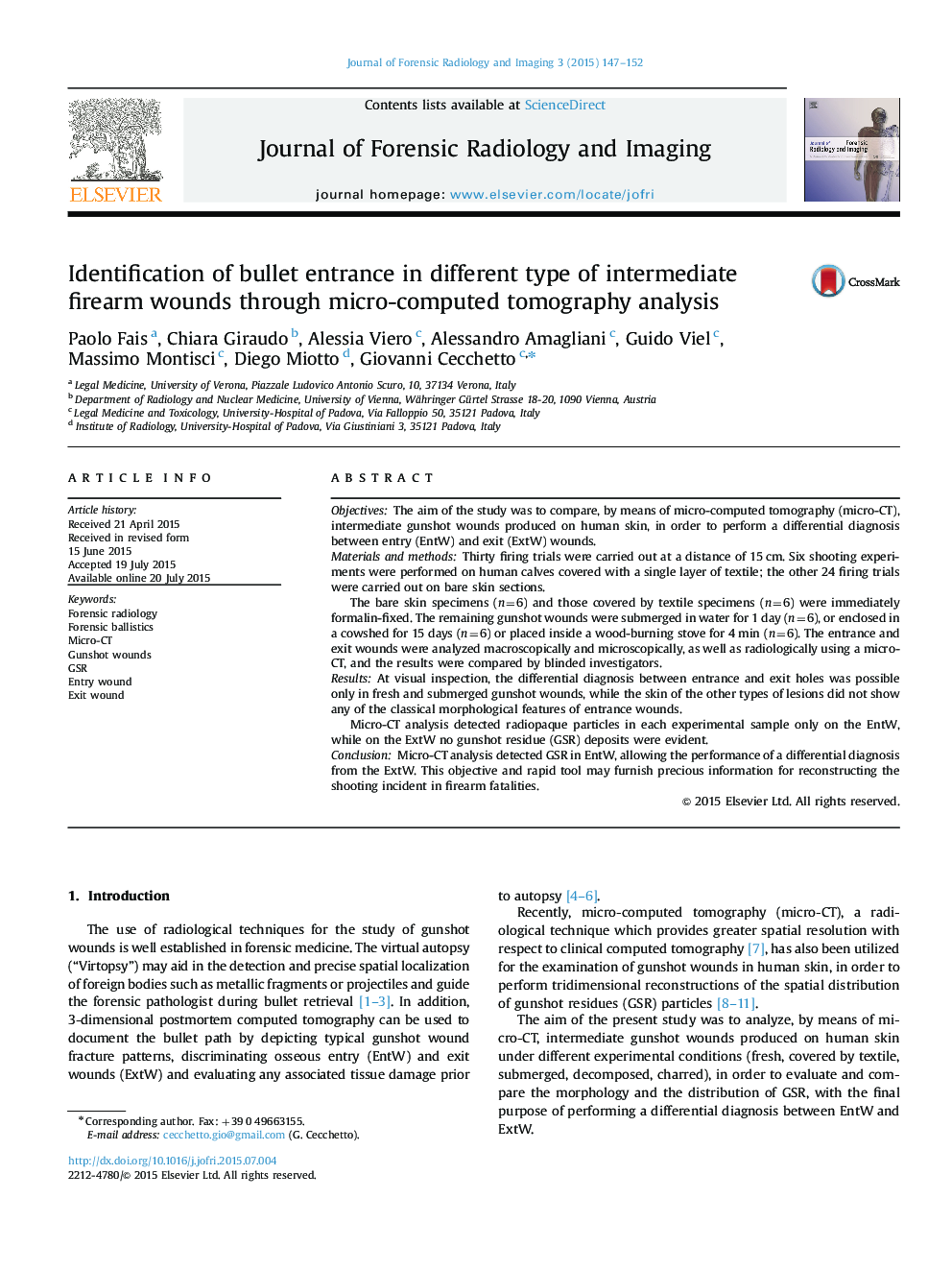| Article ID | Journal | Published Year | Pages | File Type |
|---|---|---|---|---|
| 103214 | Journal of Forensic Radiology and Imaging | 2015 | 6 Pages |
•Thirty intermediate gunshot wounds were produced on human skin.•Fresh, covered by textile, submerged, decomposed, and charred wounds were analyzed.•Gunshot wounds were analyzed macroscopically, microscopically, and radiologically.•Micro-CT analysis detected radiopaque only on the entry wounds.•Micro-CT may furnish precious information for reconstructing the shooting incident.
ObjectivesThe aim of the study was to compare, by means of micro-computed tomography (micro-CT), intermediate gunshot wounds produced on human skin, in order to perform a differential diagnosis between entry (EntW) and exit (ExtW) wounds.Materials and methodsThirty firing trials were carried out at a distance of 15 cm. Six shooting experiments were performed on human calves covered with a single layer of textile; the other 24 firing trials were carried out on bare skin sections.The bare skin specimens (n=6) and those covered by textile specimens (n=6) were immediately formalin-fixed. The remaining gunshot wounds were submerged in water for 1 day (n=6), or enclosed in a cowshed for 15 days (n=6) or placed inside a wood-burning stove for 4 min (n=6). The entrance and exit wounds were analyzed macroscopically and microscopically, as well as radiologically using a micro-CT, and the results were compared by blinded investigators.ResultsAt visual inspection, the differential diagnosis between entrance and exit holes was possible only in fresh and submerged gunshot wounds, while the skin of the other types of lesions did not show any of the classical morphological features of entrance wounds.Micro-CT analysis detected radiopaque particles in each experimental sample only on the EntW, while on the ExtW no gunshot residue (GSR) deposits were evident.ConclusionMicro-CT analysis detected GSR in EntW, allowing the performance of a differential diagnosis from the ExtW. This objective and rapid tool may furnish precious information for reconstructing the shooting incident in firearm fatalities.
